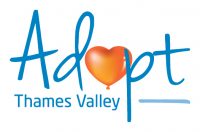How to use

Introduction
The Pip and Zaz books are designed to help children understand what it means to be adopted, what they can expect when they meet their adopter(s) for the first time and when the time comes to move from their foster carer to their adoption family. They are designed to provide a clear explanation of the process from a child’s perspective. The books will also help teachers and support staff answer any questions asked by the children in school.
The Teo book tells the story of a child who has been placed through early permanence adoption. Specific guidance notes for parents for this book can be found here.
Understanding and telling is one of the sections in a child’s care plan and is a huge, sensitive task. Every review - What progress have you made? How have you told them?
It says on a child’s care plan that once the decision has been made, it’s the role of the child’s social worker to prepare the child for adoption.
Having a book would make that task easier and make it easier to follow up.
Although pictures not real people, it is about real lives and we wanted it to feel very real. The books are not the answer to the question.
It can be tempting to think: If they’ve gone away without crying, all went really well, the child was fine. But there’s an awful lot going on inside child’s head, and it is really crucial they ask the questions, as many as possible. How do you know you have really given them all the information they need and want? The fact they’ve asked the question suggests they are ready to hear the answer. Give honest and direct answers to questions.
Social Workers
Children’s Teams will find the books a useful tool for social workers; telling a child that they are to be adopted is a very important task which needs to be done sensitively. Having an age-appropriate book to guide the child through the process will help to relieve some of the anxiety associated with this task. Both Pip and Zaz have questions to ask so hopefully this will encourage children to ask their own questions too.
Ideas and suggestions on how to use the books:
- The first time the social worker shares the books with the child, it might be helpful if foster carer is there too. This might make it easier to have follow-up conversations.
- Use drawing or other activity to encourage the child to think about what they would like their adoption family to be told about their needs (relate to page number)
- Any special belongings they want to make sure stay with them
- Encourage older children to make their own lists using post-it notes as messages to social workers and foster carers
- Give children access to paper or board so they can write questions indirectly or as they think of them. For younger children, foster carer could write for the them. Making it clear to child that their questions are important and are not going to get lost
Every transition is slightly different. Being able to say to child, this is what happened for Pip and Zaz. Some will be the same, some will be different.
Feedback and suggestions
We welcome feedback and suggestions.
These are the first titles in a series. Future aspects of adoption that we plan to cover include: children placed through early permanence adoption; siblings adopted together; siblings adopted apart; children who were adopted as a baby; being an older sibling to an adopted child.
Email: AdoptionbooksfromATV@oxfordshire.gov.uk

If you would like to find out more or are ready to begin your adoption journey then we would love to hear from you today.

There are two stages in the process of adoption which we aim to complete within six months - find out more about the adoption journey.

All adopted children are different and over time they will learn to trust you and it will transform their lives – as well as yours!

